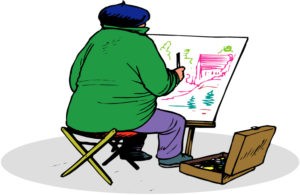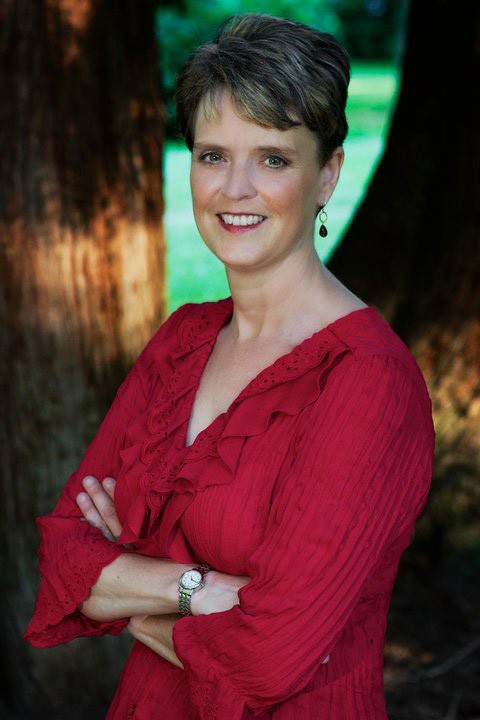When artists need to rework a detail, they can paint right over it. When writ ers need to rework something, maybe it’s not so different. I’ve been musing about that since an artist friend invited me into her studio last week. It was a tiny cabin in the woods, complete with skylight, fireplace and easels scattered around in every corner. Oil paints, brushes, and art pieces in varying states of progress.
ers need to rework something, maybe it’s not so different. I’ve been musing about that since an artist friend invited me into her studio last week. It was a tiny cabin in the woods, complete with skylight, fireplace and easels scattered around in every corner. Oil paints, brushes, and art pieces in varying states of progress.
I’d never been in an artist’s studio before, and was particularly intrigued with an unfinished landscape painting where she’d decided to take out a ferry that had been motoring along the seascape between forested islands. Poof! Just like that it was a white splodge, soon to be blended into the ocean and island view with just the right blues and greens.
I was taking a short break from my novel-in-progress at the time, and the two of us were comparing the process of writing vs. painting. We discovered that neither of us can work more than about three hours without a break, not for physical reasons, but because there’s a mental exhaustion to creative output, too.
I knew at the time I needed to rework some dialogue I’d just written. I began to picture it as the disappeared ferry. There one moment, a white splodge the next, then reworked in so carefully that no one would ever be the wiser as to how bad it was on the first round.
I felt reinvigorated, “enabled” to go home and correct what needed correcting. No shame needed to be involved for how bad it was on the first round, I told myself.
That same week, I was interviewing children’s author Kallie George for a profile, and reflected on one of her pearls of wisdom:
“Oftentimes, my first scenes are just dreadful, but as long as the germ of the idea is there, I know I can work on them until the writing itself is polished to how I like it.”
First drafts are just that: first drafts. Why do I need to periodically remind myself that rewriting is part of writing, the most important part of writing? First tries are nothing anyone need judge you by. Nothing on which you should judge yourself. It’s all as fluid as the substance on the tip of the artist’s paintbrush.
Okay, back to the easel…

